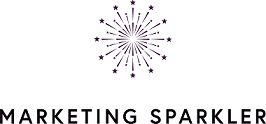Marketing moves so quickly these days, it’s hard to predict what will happen next. This provides challenges and opportunities for businesses trying to reach customers whose behaviors are becoming harder to predict.
Here’s what’s going to be big in digital marketing in 2020.
Digital Marketing Trends For 2020
Artificial Intelligence – ‘AI’
AI used to be confined to dystopian sci-fi films or Philip K. Dick novels. Now, AI is set to take center stage in the digital marketing landscape. It’s not only in reach of the best digital marketing company or large organizations, but it’s also making its way into products aimed at SME’s too.
A study by PwC predicted that the use of AI “will increase global GDP by up to 14% between now and 2030.”
AI is being used to:
- Analyse and predict consumer behaviour and patterns
- Predicts consumer action/inaction
- Segment customers
- Customer communications
- Product personalization and recommendations
- E-Commerce transactions
CEO of DiscoveryOrg, Henry Schuck states that “Any part of the marketing world where a marketer has to read data and make decisions based on that data will be affected by AI in one way or another in the near future.”
Chatbots
Chatbots are a particularly popular use of AI, and an important element of digital marketing in the coming years. These bots can be available 24/7 to answer the questions of your site visitors and customers.
Learning Hub predicts that 85% of customer service will be powered by chatbots by the end of 2020 saving huge amounts of staffing costs by 2022.
Personalization
Remember the days when the height of marketing personalisation was having your name at the beginning of an email?
Personalization has come a long way since then. The huge amounts of data collected by companies allow for highly accurate personalization.
Perhaps one of the most recognizable personalization programs is Amazon’s. By analyzing your buying behaviors and search history, they provide product recommendations. It’s a tactic that works. 70% of consumers surveyed said they were annoyed when presented with content that wasn’t tailored to them.
Netflix is another great example of personalization. Not only do they provide recommendations based on your viewing history, but they are also more subtle in their personalization. For example, if you are a woman, the cover art for a movie or TV program is sometimes changed to be more appealing.
Gartner predicts that by 2020, 90% of advertisers will be using some form of personalization in their marketing.
Social Messaging Apps
It’s taken the industry a while, but now brands are finding a way to communicate with the billions of people who are active on social messaging apps. Facebook Messenger alone has 1.3 billion active monthly users, a 55 billion messages per day are sent via WhatsApp.
Being able to get your marketing message onto these platforms is a game-changer. What’s more, people expect you to have a presence on these platforms.
Voice Search
At the end of 2018, there were almost 120 million smart speakers in US homes. The level of increase doesn’t look like slowing down any time soon. People use their smart speakers to control home appliances, check the news, and search the internet. And that’s just scratching the surface.
Approximately 20% of Google searches are voice-driven, which should be all the incentive brands need to create voice friendly content and marketing strategies.
Depending on your product or service, you can look at advertising directly on platforms through something like the branded skills marketplace. Or, if your offering doesn’t lend itself to that, make sure you take into account the nuances of voice search. Voice searches are very different from text searches, so make sure that your content is optimized to serve searches with longer, conversational queries.
If you are very lucky, you could scoop the coveted position zero on Google. With 40% of voice search answers pulled from the position zero snippets, it really is the holy grail of voice SEO.
Browser Push Notifications
Push notifications are becoming more and more popular, and it’s no surprise considering they can produce double the sign-up rates of traditional email newsletters.
Other advantages of push notifications include:
- near immediate opening (compared with up to seven hours for the typical email newsletter),
- they can be personalized to increase conversions,
- push notifications can be triggered by behaviours to help with conversion rates, and
- CTAs and images can be included, just text notifications.
Interactive Content
Marketers are having to work harder than ever these days to get their content noticed. Initially, there was a move away from solely text-based content, to images, and then video. Now brands are producing content designed to interact with the consumer for an immersive experience.
The most common forms of interactive content are:
- Calculators
- Quizzes
- Polls
- Augmented reality ads
- 360 tours
This type of content is much more engaging. How many times have you taken the Harry Potter Quiz on Facebook? As you have probably seen first hand, consumers are more likely to seek this type of content out, and share it with friends.
Shoppable Social Posts
Building on the success of Instagram Checkout, brands are investing heavily in shoppable posts in the hopes of converting more sales.
Users can now buy a product they like the look of without even having to leave the app. With over 1 billion users, the potential is huge. Combine this with Instagram influencer marketing and you make it even more appealing for users to buy right there and then.
Conclusion
Digital marketing continues to evolve so rapidly, it’s easy to feel overwhelmed by the sheer amount of channels open to you.
Your marketing should evolve too. Sticking to the same old strategies will only work for so long and you’ll not just be standing still, you’ll be surpassed by your competitors.
Focus on one or two channels, plan, implement and revise until you are happy with the results. Then look to the next step in your digital marketing roadmap.
Ciao,
Miss Kemya



Personalization is going to be big in 2020? It’s already so important. Big brands are doing it all the time. The problem is that small businesses haven’t caught up. My marketing agency has trouble convincing small businesses just how important it is, but the smart ones are starting to come around.
I couldn’t agree more. It’s the small businesses who are slow to adopt personalization. It’s still a ‘new’ trend for them to adopt. Thanks for stopping by!